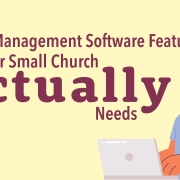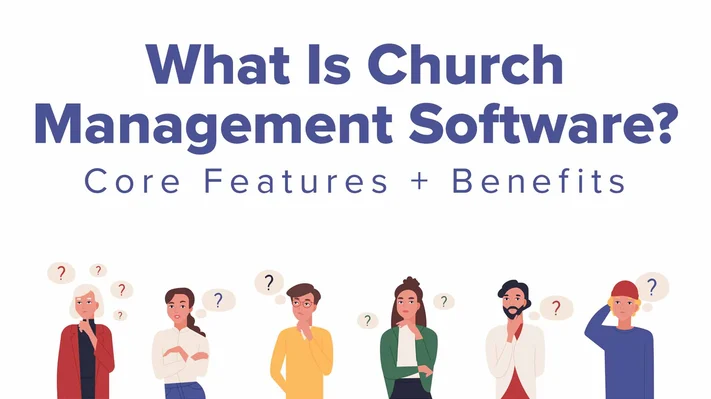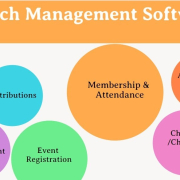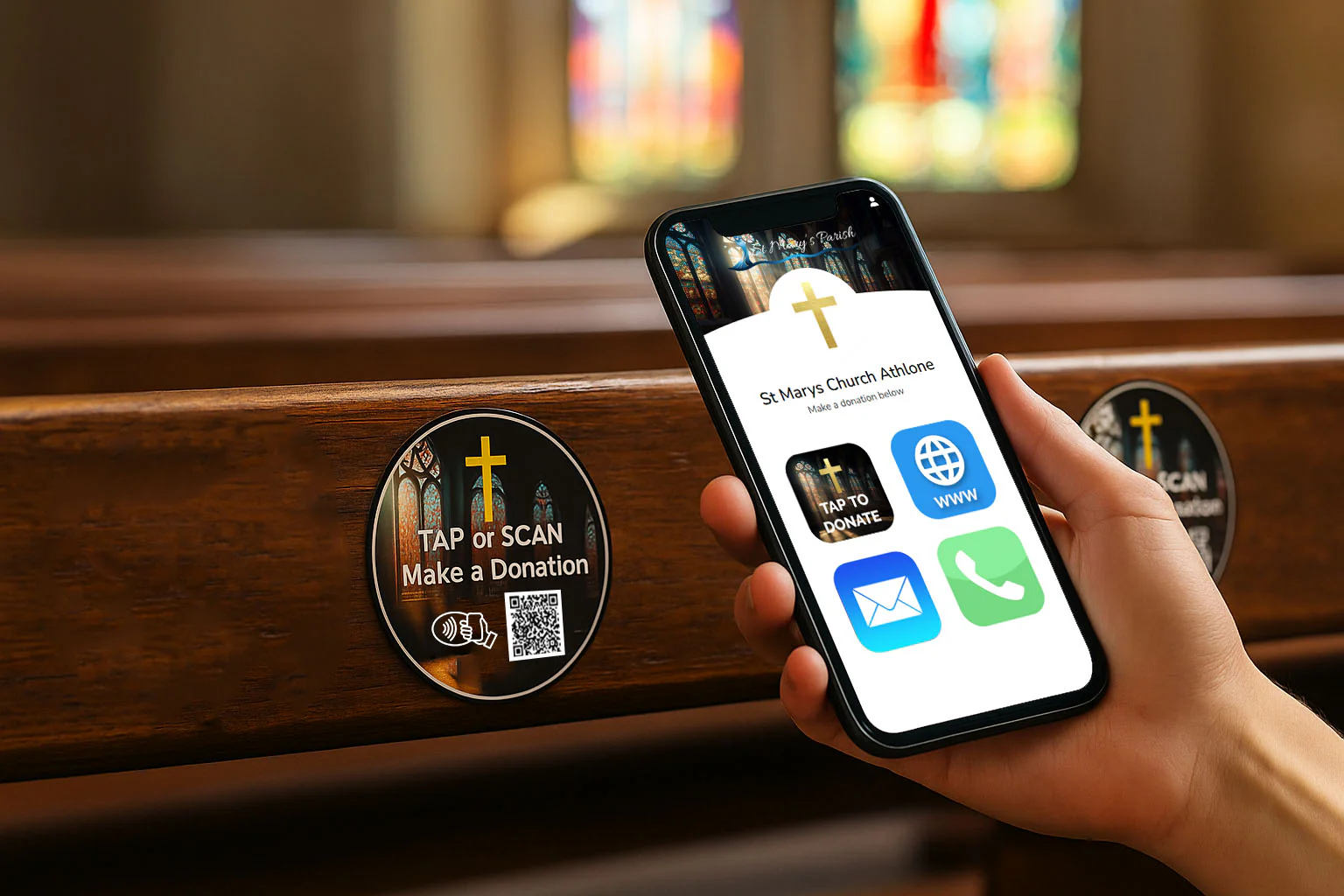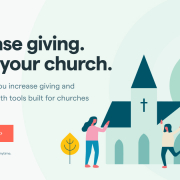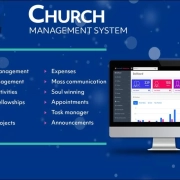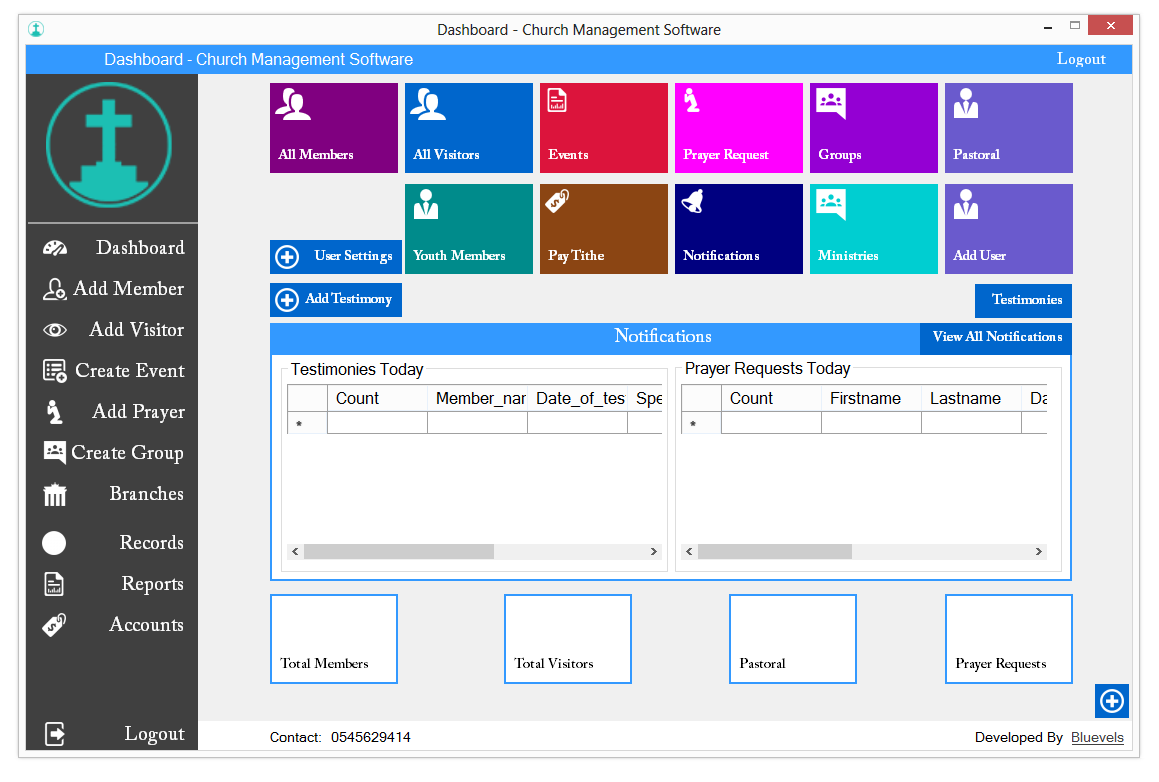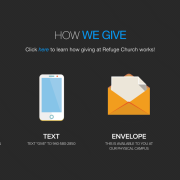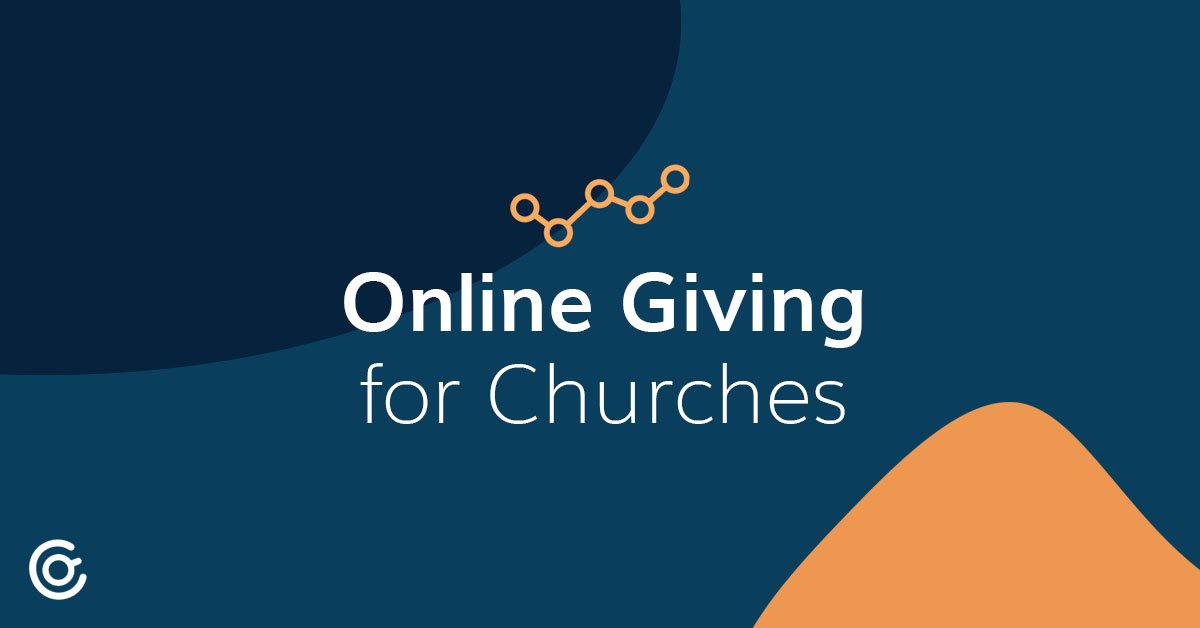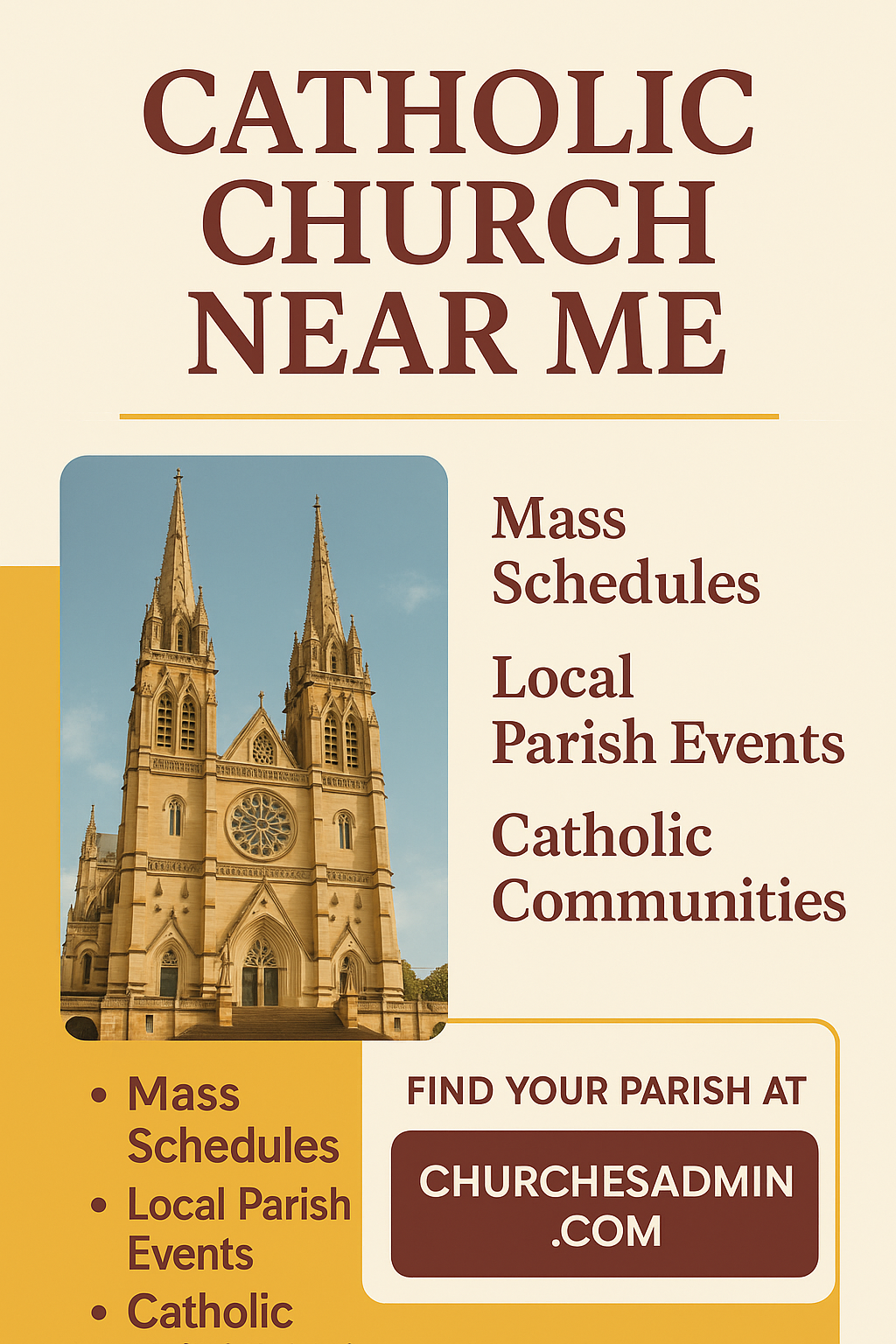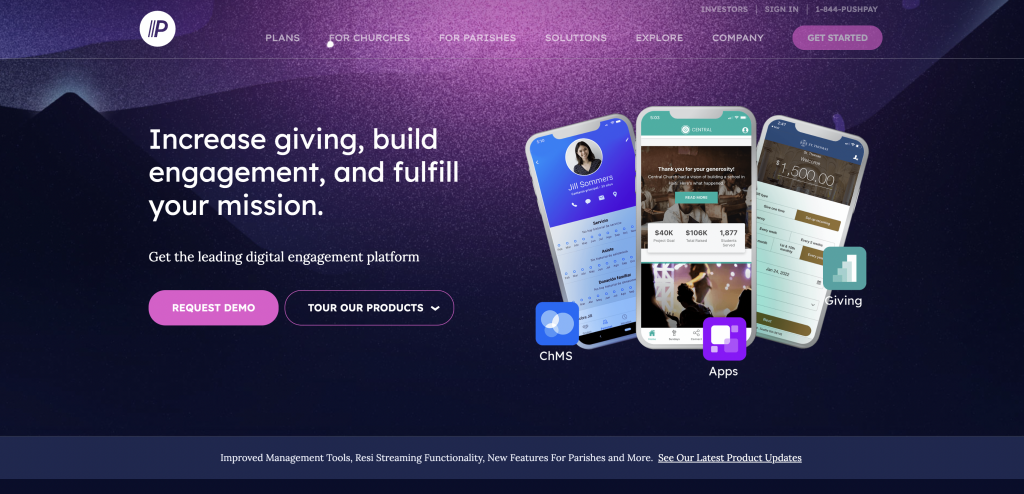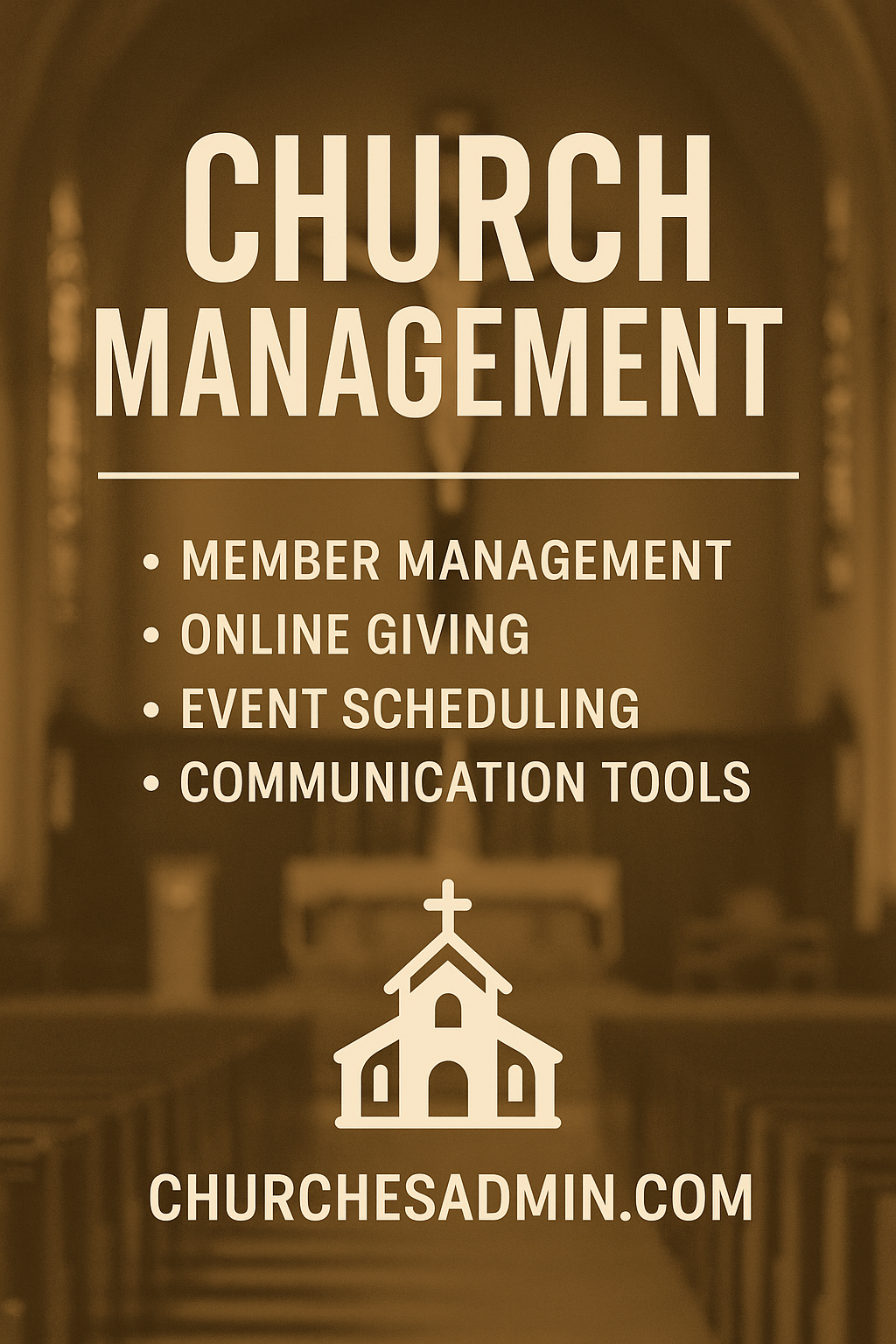
Church management refers to the processes, tools, and strategies that help a church run effectively, grow spiritually, and serve its community. Whether you lead a small parish or a mega-church, having a solid management system is essential for handling membership, finances, ministries, and outreach.
At ChurchesAdmin.com, we make church management easy by providing cloud-based tools designed for pastors, administrators, and ministry leaders worldwide.
-
Spiritual Leadership – Guiding the faith journey of your congregation.
-
Administration – Managing records, schedules, and resources.
-
Finance – Tracking donations, expenses, and budgeting.
-
Communication – Keeping members informed and connected.
-
Outreach – Serving the community and evangelizing effectively.
Without a proper system, churches can struggle with:
A strong church management approach ensures smooth daily operations and sustained growth.
Modern church management software offers:
-
Member Database – Store contact info, family details, and participation history.
-
Attendance Tracking – Monitor Mass, events, and small group attendance.
-
Financial Tools – Manage tithes, offerings, and online donations.
-
Event Planning – Organize services, weddings, baptisms, and outreach programs.
-
Communication Hub – Send newsletters, SMS, and announcements.
H2: How ChurchesAdmin.com Helps Your Church
Our platform allows churches to:
-
Digitize Member Records – Easy-to-search profiles for every parishioner.
-
Automate Donations – Secure online giving options.
-
Plan Events Seamlessly – Integrated scheduling and reminders.
-
Strengthen Engagement – Messaging tools to keep members involved.
Internal Link Example: See our Church Membership Management Tools for more details.
A key part of church management is transparency.
With the right system, you can:
-
Track income from tithes and offerings.
-
Generate monthly and annual reports.
-
Budget for ministry growth.
H2: Membership & Attendance Tracking
Knowing who is active in your church helps leaders offer better pastoral care.
Features include:
H2: Volunteer & Ministry Coordination
Volunteers are the backbone of parish life. Church management tools help:
-
Assign roles for Mass, events, and outreach.
-
Send automatic reminders.
-
Avoid scheduling conflicts.
H2: Event & Service Planning
From Sunday Mass to large-scale conferences, planning is crucial.
ChurchesAdmin.com makes it easy to:
H2: Communication & Engagement Strategies
To grow a church, you must communicate well. Use:
-
Newsletters – Share updates and devotionals.
-
SMS Alerts – Quick reminders for events.
-
Social Media – Promote sermons and community projects.
H2: Measuring Church Growth
Track your church’s spiritual and numerical growth by monitoring:
-
Attendance increases.
-
Volunteer sign-ups.
-
Financial health.
-
Outreach impact.
H2: Challenges in Church Management and How to Overcome Them
-
Lack of Technology → Adopt user-friendly software.
-
Limited Funds → Use cost-effective cloud tools like ChurchesAdmin.com.
-
Low Engagement → Strengthen communication and follow-up.
Even with the best tools, churches still need good processes and leadership habits. Here are proven strategies for running a well-organized parish:
H3: 1. Keep Member Data Organized
Maintain a centralized digital database where all member contact details, sacramental records, and participation history are stored. This ensures easy access for pastoral care and event planning.
H3: 2. Train Staff and Volunteers
A good church management system is only as effective as the people using it. Provide regular training so everyone understands how to log attendance, schedule events, and send communications.
H3: 3. Schedule Regular Planning Meetings
Monthly or quarterly strategy meetings help align ministries, avoid scheduling conflicts, and keep the parish vision on track.
H3: 4. Track Key Metrics
Monitor attendance, financial contributions, volunteer engagement, and community outreach numbers to measure church health.
H3: 5. Use Automation Where Possible
Automate repetitive tasks like email reminders, birthday greetings, and event notifications to save administrative time.
When choosing a church management system, ensure it includes:
-
Membership Database – Easily search, filter, and update member information.
-
Attendance Tracking – For services, classes, and events.
-
Donation Management – Accept online giving, track tithes, and generate receipts.
-
Event Scheduling – Reserve rooms, assign volunteers, and publish calendars.
-
Communication Tools – Email, SMS, and push notifications.
-
Multi-Campus Support – Manage different locations from one platform.
-
Secure Access Control – Limit access to sensitive financial and personal data.
H2: How ChurchesAdmin.com Stands Out
Unlike generic systems, ChurchesAdmin.com is designed specifically for churches, offering:
-
Multi-language support for international congregations.
-
Cloud access from anywhere, on any device.
-
Built-in finance tools for tracking budgets, donations, and expenses.
-
Member engagement features like automated reminders and pastoral notes.
-
Volunteer coordination tools to avoid scheduling overlaps.
H2: Financial Stewardship and Accountability
One of the most important parts of church management is handling finances transparently. Donors and members should know that contributions are being used wisely.
Best Practices for Church Finances:
-
Publish annual financial reports.
-
Keep clear records of income and expenses.
-
Use digital giving platforms for convenience and security.
-
Create a budget that balances ministry growth with sustainability.
H2: Integrating Online and In-Person Church Management
Today’s churches need hybrid strategies to manage both physical and digital ministries:
-
Streaming Services – Track online attendance and engage viewers.
-
Online Bible Studies – Use integrated video platforms for small groups.
-
Digital Event Registrations – Allow members to sign up online.
-
Automated Follow-ups – Send digital welcome kits to new attendees.
H2: Challenges Churches Face Without a Management System
Without proper systems, churches may experience:
-
Loss of member contact info.
-
Missed follow-ups with visitors.
-
Difficulty tracking donations.
-
Inefficient volunteer scheduling.
-
Overwhelmed staff and pastors.
Solution: A system like ChurchesAdmin.com keeps everything in one place, accessible anytime.
H2: Why Now is the Time to Upgrade Your Church Management
The global pandemic taught churches the value of flexibility. With members expecting both in-person and digital experiences, a strong management platform ensures:
-
You can adapt to any situation.
-
Your church remains connected with members worldwide.
-
Administrative work doesn’t take away from ministry time.
Conclusion – Lead Your Church into the Future
Church management is about much more than organization—it’s about creating a thriving, engaged, and spiritually healthy community. Whether you’re leading a small rural parish or a multi-campus ministry, tools like ChurchesAdmin.com give you the foundation to grow, serve, and lead effectively in the modern world.
This checklist is designed to help pastors, church administrators, and ministry leaders stay organized and keep every aspect of parish life running smoothly.
You can use it monthly, quarterly, or annually, depending on your church’s needs.
H3: 1. Membership & Attendance
-
Maintain an up-to-date member database with contact info, sacraments, and ministry involvement.
-
Track weekly attendance for services, Bible studies, and events.
-
Identify new visitors and schedule follow-up calls or welcome letters.
-
Record member milestones (birthdays, baptisms, confirmations, anniversaries).
H3: 2. Financial Management
-
Reconcile accounts monthly and maintain clear financial records.
-
Track all income sources — tithes, offerings, grants, and donations.
-
Prepare quarterly and annual financial reports for transparency.
-
Create and review a church budget annually.
-
Encourage multiple giving options — in-person, online, and mobile.
H3: 3. Volunteer Coordination
-
Maintain a volunteer roster with roles and contact details.
-
Assign volunteers for services, events, and outreach projects.
-
Send reminders before assigned duties.
-
Recognize and appreciate volunteers regularly.
H3: 4. Ministry & Event Planning
-
Create a 12-month ministry calendar including feast days, holidays, and outreach programs.
-
Schedule annual retreats, community events, and fundraisers.
-
Coordinate with ministry leaders to avoid date conflicts.
-
Track event attendance and feedback for improvement.
H3: 5. Communication
-
Send weekly newsletters with Mass times, events, and devotionals.
-
Post updates on social media regularly.
-
Maintain an updated church website with sermons, schedules, and news.
-
Use SMS or email alerts for urgent announcements.
H3: 6. Facility Management
-
Inspect church buildings and grounds monthly.
-
Schedule regular cleaning and maintenance.
-
Ensure safety equipment (fire extinguishers, alarms) is functional.
-
Review rental agreements for facilities used by outside groups.
H3: 7. Outreach & Community Engagement
-
Organize charity drives and community service projects.
-
Support local missions and global partnerships.
-
Invite community members to church events.
-
Offer classes or workshops that benefit the wider community.
H3: 8. Leadership & Training
-
Hold regular leadership meetings to align vision and goals.
-
Provide training for staff and volunteers on using church management tools.
-
Encourage spiritual development among leaders.
-
Review leadership performance annually.
H3: 9. Spiritual Care
-
Schedule pastoral visits to the sick, elderly, or bereaved.
-
Offer counseling sessions for individuals and families.
-
Maintain prayer groups and small faith-sharing communities.
H3: 10. Technology & Systems
-
Keep church management software updated.
-
Back up digital records regularly.
-
Train new staff on technology tools.
-
Review system security to protect sensitive data.
H2: Turning the Checklist into Action with ChurchesAdmin.com
ChurchesAdmin.com helps you automate much of this checklist:
-
Membership database and attendance tracking built-in.
-
Financial reports generated instantly.
-
Volunteer scheduling with automatic reminders.
-
Event planning tools with calendar sync.
-
Communication hub for SMS, email, and announcements.
H2: Global Trends in Church Management
Church management today looks very different compared to a decade ago.
The digital age, global travel, and changing community needs are transforming the way pastors and administrators lead their congregations.
Here are the most significant worldwide trends every church leader should be aware of.
H3: 1. Digital Transformation of Church Administration
From the smallest rural parish to the largest urban cathedral, technology is now central to church management:
-
Cloud-Based Systems – Churches are moving from paper records to online databases for member, attendance, and financial tracking.
-
Online Giving – Secure platforms for tithes and offerings allow members to give anytime, anywhere.
-
Event Management Tools – Automating registration, reminders, and follow-ups for services and events.
Why it matters:
A church with digital systems can run efficiently, reduce administrative load, and focus more on ministry.
H3: 2. Hybrid Worship Models (In-Person + Online)
The COVID-19 pandemic accelerated the need for hybrid services:
-
Live Streaming – Mass and worship services broadcast on YouTube, Facebook Live, or dedicated platforms.
-
Interactive Online Worship – Virtual prayer meetings, Q&A sessions, and online Bible studies.
-
On-Demand Sermons – Recorded services available for members who can’t attend live.
Why it matters:
Hybrid worship ensures churches reach people beyond their local community—even internationally.
H3: 3. Data-Driven Decision Making
Churches are increasingly using analytics to guide leadership decisions:
-
Tracking attendance patterns to identify trends.
-
Analyzing giving data to forecast budgets.
-
Measuring event engagement to improve ministry outreach.
Why it matters:
Data helps pastors see what’s working, what’s declining, and where to invest resources.
H3: 4. Focus on Member Engagement and Discipleship
Rather than measuring success only by attendance, many churches now track spiritual engagement:
Why it matters:
Healthy churches are not just big in numbers but strong in faith formation.
H3: 5. Financial Transparency and Stewardship
Global best practices demand churches be transparent with their finances:
Why it matters:
Transparency builds trust with members and donors, encouraging greater generosity.
H3: 6. Mobile-First Church Management
In many countries, mobile devices are the primary internet access point.
Modern church management systems now offer:
-
Mobile apps for pastors and leaders.
-
Member self-service portals for updating info and signing up for events.
-
Push notifications for urgent updates.
Why it matters:
A mobile-first approach keeps churches connected with members anytime, anywhere.
H3: 7. Global Collaboration Among Churches
International networks of churches are sharing:
-
Resources – Sermon series, training materials, event templates.
-
Mission Opportunities – Joint outreach programs across countries.
-
Technology Partnerships – Shared platforms like ChurchesAdmin.com for unified church management.
Why it matters:
Collaboration breaks down isolation, allowing even small churches to have a global impact.
H2: How ChurchesAdmin.com Fits into These Trends
-
Cloud-Based Access – Manage your church from anywhere.
-
Hybrid Service Support – Integration with streaming platforms.
-
Analytics Dashboard – Track growth and giving patterns.
-
Mobile-Friendly Interface – Access on phones and tablets.
-
Multi-Church Support – Perfect for dioceses and multi-campus ministries.
H2: Case Studies – Real-World Church Management Success Stories
These examples illustrate how diverse churches, from small rural parishes to large multi-campus ministries, have improved their efficiency, growth, and engagement through effective church management practices.
H3: Case Study 1 – Small Rural Parish in Kenya
Profile:
Challenges Before:
Solution with ChurchesAdmin.com:
-
Migrated member records to a cloud-based system
-
Enabled SMS notifications for event reminders and urgent updates
-
Implemented attendance tracking for services and catechism classes
Results:
-
Attendance increased by 18% in six months
-
Faster follow-up with new visitors
-
Members felt more connected despite distance
H3: Case Study 2 – Medium-Sized City Church in the USA
Profile:
-
1,200 members
-
Located in a growing suburban community
-
Active youth, music, and outreach ministries
Challenges Before:
-
Overlapping ministry schedules causing conflicts
-
Manual event sign-ups leading to low participation
-
Difficulty managing volunteer assignments
Solution with ChurchesAdmin.com:
-
Centralized calendar for all ministries
-
Online event registration with automatic confirmations
-
Volunteer scheduling tool with reminders and role assignments
Results:
-
Ministry conflicts reduced to zero
-
Event participation improved by 35%
-
Volunteer satisfaction and retention increased
H3: Case Study 3 – Mega Church in Nigeria
Profile:
-
20,000 members across multiple campuses
-
Large worship events and weekly broadcasts
-
Multiple revenue streams including donations, book sales, and conferences
Challenges Before:
-
Disconnected data between campuses
-
Lack of unified financial reporting
-
Difficulty managing massive volunteer teams
Solution with ChurchesAdmin.com:
-
Multi-campus support for centralized data management
-
Real-time financial tracking and consolidated reporting
-
Dedicated volunteer coordination module
Results:
-
Financial transparency improved
-
Leaders could view live data from all campuses
-
Volunteer teams became more efficient and better organized
H3: Case Study 4 – Mission Church in the Philippines
Profile:
Challenges Before:
-
Inconsistent communication with donors
-
Difficulty tracking outreach impact
-
No digital presence for remote supporters
Solution with ChurchesAdmin.com:
-
Online donor portal for contributions and updates
-
Impact reports for outreach programs with photos and attendance stats
-
Website integration to share mission stories globally
Results:
-
Donor contributions increased by 50%
-
Greater transparency attracted international supporters
-
Mission impact measurable and shareable with stakeholders
H2: Key Takeaways from These Case Studies
-
Small Churches benefit from basic automation and improved communication.
-
Medium Churches thrive when scheduling and volunteer management are streamlined.
-
Mega Churches require advanced reporting, multi-campus support, and team coordination.
-
Mission Churches gain the most from donor engagement tools and storytelling features.

